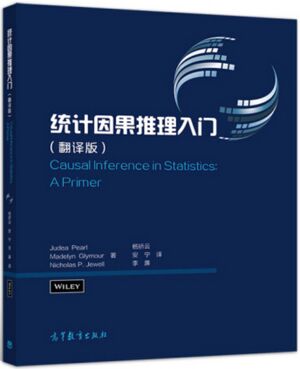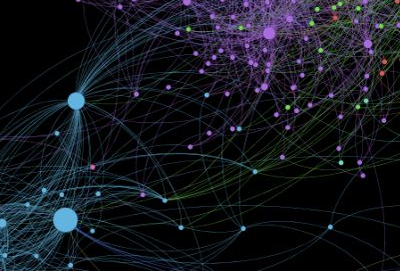Elements of Causal Inference: Foundations and Learning Algorithms
内容简介-英文
The mathematization of causality is a relatively recent development, and has become increasingly important in data science and machine learning. This book offers a self-contained and concise introduction to causal models and how to learn them from data. After explaining the need for causal models and discussing some of the principles underlying causal inference, the book teaches readers how to use causal models: how to compute intervention distributions, how to infer causal models from observational and interventional data, and how causal ideas could be exploited for classical machine learning problems. All of these topics are discussed first in terms of two variables and then in the more general multivariate case. The bivariate case turns out to be a particularly hard problem for causal learning because there are no conditional independences as used by classical methods for solving multivariate cases. The authors consider analyzing statistical asymmetries between cause and effect to be highly instructive, and they report on their decade of intensive research into this problem.
The book is accessible to readers with a background in machine learning or statistics, and can be used in graduate courses or as a reference for researchers. The text includes code snippets that can be copied and pasted, exercises, and an appendix with a summary of the most important technical concepts.
内容简介-中文
《因果推理:基础与学习算法》从概率统计的角度入手,分析了因果推理的假设,揭示这些假设所暗示的因果推理和学目的。本书分别论述了变量和多变量情况下的因果模型、学习因果模型及其与机器学关系,讨论了因果推理隐藏变量有关的问题、时间系列的因果分析。 《因果推理:基础与学习算法》可作为高等院校人工智能和计算机科学等相关专业高年级本科生和硕士研究生的教材,也可供研究机器学习、因果推理的技术人员参考。
基本信息
书名:Elements of Causal Inference: Foundations and Learning Algorithms
作者:Jonas Peters/Dominik Janzing/Bernhard Schölkopf
中文翻译版:因果推理基础与学习算法
译者: 李小和 / 卢胜男 / 程建国
作者介绍
Jonas PetersJonas Peters is Professor of Statistics at the University of Copenhagen.
Dominik JanzingDominik Janzing is a Senior Research Scientist at the Max Planck Institute for Intelligent Systems in Tübingen, Germany.
Bernhard SchölkopfBernhard Schölkopf is Director at the Max Planck Institute for Intelligent Systems in Tübingen, Germany. He is coauthor of Learning with Kernels (2002) and is a coeditor of Advances in Kernel Methods: Support Vector Learning (1998), Advances in Large-Margin Classifiers (2000), and Kernel Methods in Computational Biology (2004), all published by the MIT Press.
内容目录
Preface xi
1 Preliminaries: Statistical and Causal Models 1
1.1 Why Study Causation 1
1.2 Simpson’s Paradox 2
1.3 Probability and Statistics 9
1.3.1 Variables 10
1.3.2 Events 11
1.3.3 Conditional probability 11
1.3.4 Independence 13
1.3.5 Probability distributions 14
1.3.6 The law of total probability 15
1.3.7 Using Bayes’ rule 18
1.3.8 Expected values 22
1.3.9 Variance and covariance 24
1.3.10 Regression 27
1.3.11 Multiple regression 31
1.4 Graphs 33
1.5 Structural Causal Models 36
1.5.1 Modeling causal assumptions 36
1.5.2 Product decomposition 40
2 Graphical Models and Their Applications 47
2.1 Connecting Models to Data 47
2.2 Chains and Forks 48
2.3 Colliders 55
2.4 d-Separation 62
2.5 Model Testing and Causal Search 66
3 The Effects of Interventions 71
3.1 Interventions 71
3.2 The Adjustment Formula 74
3.2.1 To adjust or not to adjust? 79
3.2.2 Multiple interventions and the truncated product rule 81
3.3 The Back-Door Criterion 82
3.4 The Front-Door Criterion 89
3.5 Conditional Interventions and Covariate-Specific Effects 95
3.6 Inverse Probability Weighing 98
3.7 Mediation 103
3.8 Causal Inference in Linear Systems 107
3.8.1 Structural vs. regression coefficients 110
3.8.2 The causal interpretation of structural coefficients 111
3.8.3 Identifying structural coefficients and causal effect 113
3.8.4 Mediation in linear systems 119
4 Counterfactuals and their Applications 123
4.1 Counterfactuals 123
4.2 Defining and Computing Counterfactuals 126
4.2.1 The structural interpretation of counterfactuals 126
4.2.2 The fundamental law of counterfactuals 130
4.2.3 From population data to individual behavior – an illustration 131
4.2.4 The three steps in computing counterfactuals 133
4.3 Non-Deterministic Counterfactuals 136
4.3.1 Probabilities of counterfactuals 136
4.3.2 The Graphical representation of counterfactuals 141
4.3.3 Counterfactuals in experimental settings 144
4.3.4 Counterfactuals in linear models 147
4.4 Practical uses of counterfactuals 149
4.4.1 Recruitment to a program 149
4.4.2 Additive interventions 152
4.4.3 Personal decision making 155
4.4.4 Sex discrimination in hiring 158
4.4.5 Mediation and path-disabling interventions 159
4.5 Mathematical Tool Kits for Attribution and Mediation 161
4.5.1 A tool kit for attribution and probabilities of causation 162
4.5.2 A tool kit for mediation 167
References 176
资源获取
相关wiki
编者推荐
豆瓣书评
一次减法带来的科学革命
“一直都不太看好所谓的归因分析, 也不太理解为什么归因分析会作为图灵奖评审标准. 归因分析其实就是概率减法而已, 这是个再简单不过的概念.归因分析近年来受到了互联网公司的关注. Uber 就是其中之一.理论科学有的时候只要稍稍有一些创新概念, 就会带来应用领域的革命, 所以不要放过自己每一次的灵光一现.” ——Hao
Goodreads书评
“I read this book because I was so impressed with the importance of causal inferencing from data, as Pearl has developed it, in his more popular book, "The Book of Why". But that book didn't present enough detail for me to actually apply causal analysis to my own data. I hoped that a self-styled "Primer" would fill that gap.
Unfortunately, this book did not help......” ——James Foster
“......So yes, I guess I'm drinking the Pearl Kool-aid. This book deserves such praise in my opinion, though, for having the informative lack of fluff of a textbook without the soporific dryness of one” ——Anthony DiGiovanni
集智俱乐部读书会推荐
因果推理与机器学习读书会
大数据时代的下一场变革——因果革命正在酝酿之中,通过融合因果推理和机器学习而构建出来的Causal AI系统,有望奠定强人工智能的基石。集智俱乐部联合北京智源人工智能研究院,邀请了一批对因果科学与Casual AI感兴趣的研究者,开展为期2-3个月的系列线上读书会,研读经典和前沿论文,并尝试集体撰写一部书籍。
集智俱乐部相关文章
图模型与因果推理基础- SCM框架和Do-Calculus
- 本文主要串讲了Pearl因果识别框架的基础知识,包括图模型、结构因果模型的范式,三种识别策略,以及如何运用do- calculus的三种规则来进行因果识别。本篇内容整理自因果科学读书会第一季。
第二种想象力:社会科学中的因果推断
- 本文中南京大学陈云松教授从“因果”和“数据”两个维度,用因果推断、大数据和机器学习等方面的系列研究案例,阐释第二种想象力的八类思维面向。
因果科学的学习路线图
- 本文主要根据对因果推断引擎的介绍,为关注因果科学领域的初学者提供了完整的学习路径
本中文词条由因果读书会词条梳理志愿者一尾鱼编辑,未经专家审核,带来阅读不便,请见谅。
本词条内容源自wikipedia及公开资料,遵守 CC3.0协议。

